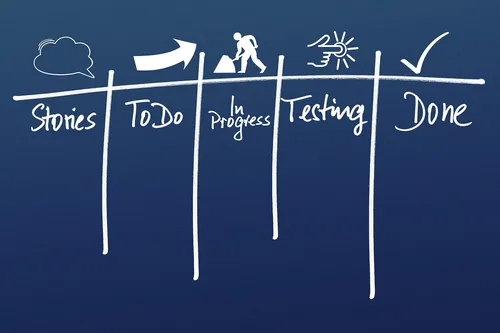
Hola, hola, querido estudiante universitario o de secundaria que andas por allí por el mundo intentando hacer un ensayo y no tienes la menor idea de cómo empezar, pues, en este post encontrarás algunos lineamientos para organizarte y no morir en el intento en la redacción de tu ensayo.
¿Qué es el ensayo?

En primer lugar, siempre me gusta iniciar con las definiciones, porque ayudan a los nuevos escritores a acercarse al tipo de texto que van a realizar. En este caso, el ensayo es un texto en el que su autor busca desarrollar una idea en torno a cualquier tema, no obstante, su finalidad no es acabar con el tema, más bien el autor, a través del ensayo, solo quiere dejar por escrito su parecer en torno al tema tratado.
Esto es un poco confuso, pero, supongamos que estás en clases de medicina, están tratando el tema del aborto, sus causas, consecuencias, criterios para hacerlo, etc. Después de las explicaciones correspondientes, el profesor te pide que elabores un ensayo en el que expongas tus opiniones sobre el aborto, esto es decir, si estás de acuerdo o no y expliques tus razones.
Mucho se ha escrito sobre el aborto ¿Cierto? Pero todos tenemos una opinión frente al aborto. Entonces, recurrimos la ensayo para escribir sobre un tema que ya ha sido ampliamente discutido, pero del que todavía queda mucho por decir. Con este ensayo el docente busca hacer que organices tus ideas por escrito con respecto al tema seleccionado, lo cual implica leer sobre el tema, presentar una tesis y tus argumentos, además de planear el texto, pero este es otro tema.
¿El ensayo es de reciente data?

No, no lo es. No es un invento malintencionado de tus profesores para extender la agonía de tus estudios. No. Así me dijo una vez uno de mis estudiantes, al cual se le daba muy mal eso de escribir, solamente, porque la pereza lo mataba. Después de varias sesiones, tropiezos, peleas y demás hierbas aromáticas, comprendió lo importante del ensayo y el proceso de escribir ¡Gracia a Dios por eso!
Con respecto a su origen puede ubicarse su aparición en el año 1580, cuando un señor llamado Montaigne rompe con el estilo de escritura de esa época e introduce un conjunto de artículos en los que trata diferentes temas y los llama Ensayos. Estos textos abarcan distintos temas relacionados con temas propios de la época e implican una nueva forma de producir conocimiento y del quehacer del escritor de la época, además, introducen al mundo de esa época una nueva palabra que marca un nuevo punto de referencia literario.
Un poco más tarde, aparece Bacon, más o menos en el 1597, con una forma de escritura que también se caracteriza por ser parecida al ensayo. Este señor, en relación con la nueva palabra, palabras más, palabras menos, expresa que el sí, hay una innovación en cuanto al término, pero que antes de eso ya se hacían ensayos, solo que no se les había asignado un nombre propio, que es lo que le otorga carácter de existencia a las cosas del mundo.
Ambos autores tienen una forma distinta de introducir sus ideas. Mientras Montaigne destaca por su posición reflexiva y poética escrita en primera persona, Bacon se caracteriza por partir de ideas más abstractas, persuadir a sus lectores, es decir, plantear sus ideas desde una perspectiva retórica. Sus formas de emprender el proceso de creación del ensayo es bastante distinta, sin embargo, en este post no pretendo dedicarme a eso, pero sí que quería que supieras que se ha hablado o, mejor dicho, escrito sobre el ensayo hace mucho tiempo.
¿Existen tipos de ensayos?

¡Padre mío, esto es todo un predicamento! Pero, sí tiene respuesta. Gracias a los dos señores mencionados más arriba, en estos tiempos, podemos ubicar al menos tres formas de concebir al ensayo. Estas son filosófica, poética y académica. Todo dependerá del enfoque del que escribe. Generalmente, el ensayo que te piden en la universidad o el bachillerato es el académico que tiene como propósito exponer el punto de vista del autor sobre un tema. Este tipo de texto coquetea con la exposición y la argumentación, porque se sirve de estas dos tipologías textuales para llegar al fin último del ensayo: fijar una posición.
Dicho esto, es posible advertir de plano que intentar definirlo, caracterizarlo no es tarea fácil, porque desde sus inicios este tipo de texto presenta variaciones, concepciones y perspectivas distintas. Sin embargo, encontramos algunas características generalizadas en su forma. Por ejemplo, es un tipo de escrito versátil, porque permite escribir sobre cualquier tema sin llegar a caer en el rigor de lo metodológico, es decir, puedes expresar tu punto de vista sobre lo que quieras.
Asimismo, la estructura del texto está sujeta a la disposición del autor, el cual debe poseer un mínimo de estrategias y habilidades cognitivo lingüísticas necesarias para ensayar el proceso de escritura. Esto es, reconocer estructuras sintácticas, dominar el campo semántico en cuanto al uso de sinónimos y antónimos, la organización de las ideas, los párrafos, elementos esenciales para comenzar a escribir cualquier texto.
El ensayo académico requiere de las citas, aunque su intención sea la de emitir un juicio en el ámbito académico, es necesario recurrir a ellas, aunque sean citas parafraseadas, que son también una forma válida para referirse a las ideas de un autor y tomarlas como base para presentar tus argumentos. Ahora bien, cuando se trata de un examen tipo ensayo, es posible tener la licencia de simplemente mencionar a los autores.
Con respecto a esto, yo suelo aconsejarles que usen citas textuales, sí y solo sí, son necesarias, porque más que un arqueo bibliográfico, busco hacer que ellos sean capaces de organizar un texto para emitir una opinión, pero, al final, eso dependerá de su profesor. Siempre pregunta antes de comenzar a escribir.
¿El ensayo tiene una estructura textual?

Fuente
Sí, todo texto tiene una estructura. Un cuento, un poema, una novela, una noticia, una tesis, un artículo de opinión. Todos los textos tienen una estructura. Todos comienzan con una introducción, prosiguen con párrafos de desarrollo y terminan con una conclusión. Es por eso que desde la escuela tus profesores de castellano insisten tanto en el tema de los párrafos, ideas principales, secundarias y demás cosas relacionadas con los textos.
En un ensayo, generalmente, se comienza presentando el tema y la tesis a sostener. Además, puedes explicar al lector la perspectiva del planteamiento y cómo estará estructurado el mismo. En este momento, eres tú el que decide como estructurarlo, puedes optar por un texto corrido, pero bien segmentado, o usar apartados. Antes, tienes que haber leído y seleccionado la información que se ajuste a tu planteamiento, elaborar un esquema previo, resúmenes.
En los párrafos de desarrollo, comenzará el centro del texto, es decir, la discusión del tema. Presentarás la información obtenida, los tópicos centrales. En este momento, puedes presentar algo de teoría, ejemplos (los ejemplos siempre son una buena estrategia) incluso incorporar tus comentarios (sin caer en lo anecdótico).
Por último, la conclusión, es aquí donde recoges todo lo planteado, emites tu opinión, resumes los planteamientos y dejas claro tu posición frente al tema.
¿Qué debo hacer si me toca escribir un ensayo académico?

Fuente
Ya perdí la cuenta de cuántas veces les he dicho esto a mis estudiantes: Debes leer antes de escribir, antes de iniciar cualquier proceso de escritura. No hay atajos, se comienza la redacción de un texto leyendo. No pierdo la esperanza de que tanto tú como mis estudiantes, lo entiendan.
Una vez recopilada y leída la información, comienzas a seleccionar lo que te sirva y lo que no para argumentar tu punto de vista. Cada vez que selecciones un documento (artículo, libro, página web) tómate el tiempo para anotar el nombre y apellido del autor, el año (si lo tiene), el título, y copia, pega y guarda la URL o el DOI del texto. Esto es esencial para elaborar después las referencias bibliográficas.
Elaborar un esquema. Esto te permitirá organizar tus ideas y facilitará el proceso de escritura. Además, podrás definir cómo introducir el tema, de lo general a lo particular o de lo particular a lo general (deductivo o inductivo).
Redacta con tiempo. Esto te dará chance de volver al texto y corregir cualquier error en el mismo.
Para terminar:
No existe fórmula mágica para convertirse en un escritor experto, pero la práctica hace al maestro, por eso siempre les recomiendo a mis estudiantes que comiencen a escribir todos los días para que desarrollen las habilidades necesarias para mejorar cada día en este proceso.

-. La información obtenida aquí es parte de mi experiencia como docente, no obstante, quiero destacar que existen muchos textos que aportan mucha información sobre la teoría del ensayo, como es el caso Sánchez, J. (2007). Saber Escribir. Este libro me parece bastante didáctico y accesible para los estudiantes.
-. El separador fue hecho por mí en powerpoint.
-. La imagen principal fue creada en Canva.

*** Eng ***

Hello, hello, dear college or high school student out there in the world trying to write an essay, and you have no idea how to start, well, in this post you will find some guidelines to get organized and not die trying to write your essay.
What is the essay?
First, I always like to start with definitions, because they help new writers to approach the type of text they are going to write. In this case, the essay is a text in which the author seeks to develop an idea about any topic, however, its purpose is not to finish with the topic, rather the author, through the essay, just wants to put down in writing his or her opinion about the topic.
This is a bit confusing, but, let's suppose you are in a medical class, they are dealing with the subject of abortion, its causes, consequences, criteria for doing it, etc. After the explanations, the teacher asks you to write an essay in which you state your views on abortion, i.e. whether you agree or disagree, and explain your reasons.
A lot has been written about abortion, hasn't it? But everyone has an opinion on abortion. So we use the essay to write about a topic that has already been widely discussed, but about which there is still much to be said. With this essay, the teacher aims to get you to organize your ideas in writing on the selected topic, which involves reading about the topic, presenting a thesis and your arguments, and planning the text, but this is another topic.
Is the essay of recent date?

No, it is not. It is not a malicious invention of your teachers to extend the agony of your studies. No. That's what one of my students once told me, who was very bad at writing, only because laziness killed him. After several sessions, stumbles, fights and other aromatic herbs, he understood the importance of the essay and the process of writing - thank God for that!
With regard to its origin, it can be traced back to the year 1580, when a gentleman called Montaigne broke with the style of writing of that time and introduced a set of articles in which he dealt with different subjects and called them Essays. These texts cover different subjects related to the themes of the time and imply a new way of producing knowledge and the work of the writer of the time, as well as introducing a new word to the world of the time that marks a new literary point of reference.
A little later, Bacon appeared, more or less in 1597, with a form of writing that is also characterized by its similarity to the essay. This gentleman, in relation to the new word, words more, words less, expresses that yes, there is an innovation in terms of the term, but that before that there were already essays, only that they had not been assigned a proper name, which is what gives the things of the world their character of existence.
Both authors have a different way of introducing their ideas. While Montaigne stands out for his reflective and poetic stance written in the first person, Bacon is characterized by starting from more abstract ideas, persuading his readers, that is, presenting his ideas from a rhetorical perspective. Their ways of undertaking the process of creating the essay are quite different, however, in this post I don't intend to devote myself to that, but I did want you to know that the essay has been talked, or rather written, about for a long time.
Are there types of essay?

My father, this is quite a predicament! But it does have an answer. Thanks to the two gentlemen mentioned above, in these times, we can locate at least three ways of conceiving the essay. These are philosophical, poetic and academic. It all depends on the approach of the writer. Generally, the essay you are asked to write at university or high school is the academic one, whose purpose is to expose the author's point of view on a subject. This type of text flirts with exposition and argumentation, because it uses these two textual typologies to reach the ultimate goal of the essay: to establish a position.
Having said this, it is possible to note from the outset that trying to define and characterize it is not an easy task, because from its beginnings this type of text presents variations, conceptions and different perspectives. However, we do find some generalized characteristics in its form. For example, it is a versatile type of writing, because it allows you to write about any topic without falling into the rigour of the methodological, that is, you can express your point of view on whatever you want.
Likewise, the structure of the text is subject to the author's disposition, who must possess a minimum of cognitive and linguistic strategies and skills necessary to rehearse the writing process. That is, recognizing syntactic structures, mastering the semantic field in terms of the use of synonyms and antonyms, the organization of ideas, paragraphs, essential elements to start writing any text.
The academic essay requires quotations, even if your intention is to make a judgement in the academic field, it is necessary to resort to them, even if they are paraphrased quotations, which are also a valid way to refer to the ideas of an author and take them as a basis for presenting your arguments. However, when it comes to an essay-type examination, it is possible to have the licence to simply mention the authors.
In this respect, I usually advise them to use quotations, if and only if they are necessary, because rather than a bibliographical survey, I am looking for them to be able to organize a text to make an opinion, but, in the end, that will depend on their teacher. Always ask questions before you start writing.
Does the essay have a textual structure?
Yes, every text has a structure. A short story, a poem, a novel, a news item, a thesis, an opinion article. All texts have a structure. They all begin with an introduction, continue with developmental paragraphs and end with a conclusion. That is why your Spanish teachers at school insist so much on paragraphs, main ideas, secondary ideas and other things related to texts.
In an essay, you usually start by presenting the topic and the thesis to be supported. In addition, you can explain to the reader the perspective of the approach and how it will be structured. At this point, it is up to you to decide how to structure it, you can opt for a continuous text, but well segmented, or you can use sections. Beforehand, you must have read and selected the information that fits your approach, draw up a preliminary outline and summaries.
In the development paragraphs, you will begin the core of the text, i.e. the discussion of the topic. You will present the information obtained, the central topics. At this point, you can present some theory, examples (examples are always a good strategy) and even incorporate your comments (without being anecdotal).
Finally, the conclusion, this is where you gather everything that has been raised, give your opinion, summarize the approaches and make clear your position on the subject.
What should I do if I have to write an academic essay?
I've lost count of how many times I've said this to my students: You must read before you write, before you start any writing process. There are no shortcuts, you start writing a text by reading. I do not lose hope that you, as well as my students, will understand this.
Once you have collected and read the information, you start selecting what works and what doesn't to argue your point of view. Every time you select a document (article, book, web page) take the time to write down the author's name and surname, the year (if it has one), the title, and copy, paste and save the URL or DOI of the text. This is essential for later bibliographical references.
Draw up an outline. This will allow you to organize your ideas and facilitate the writing process. In addition, you will be able to define how to introduce the topic, from the general to the particular or from the particular to the general (deductive or inductive).
Write in good time. This will give you a chance to go back to the text and correct any mistakes in the text.
To conclude:
There is no magic formula to become an expert writer, but practice makes perfect, that is why I always recommend my students to start writing every day so that they develop the necessary skills to improve every day in this process.

Note:
-. The information obtained here is part of my experience as a teacher, however, I want to highlight that there are many texts that provide a lot of information on the theory of the essay, such as Sánchez, J. (2007). Saber Escribir. I find this book quite didactic and accessible for students.
-. The dividers were created by me in powerpoint.
-. The main image was created in Canva
